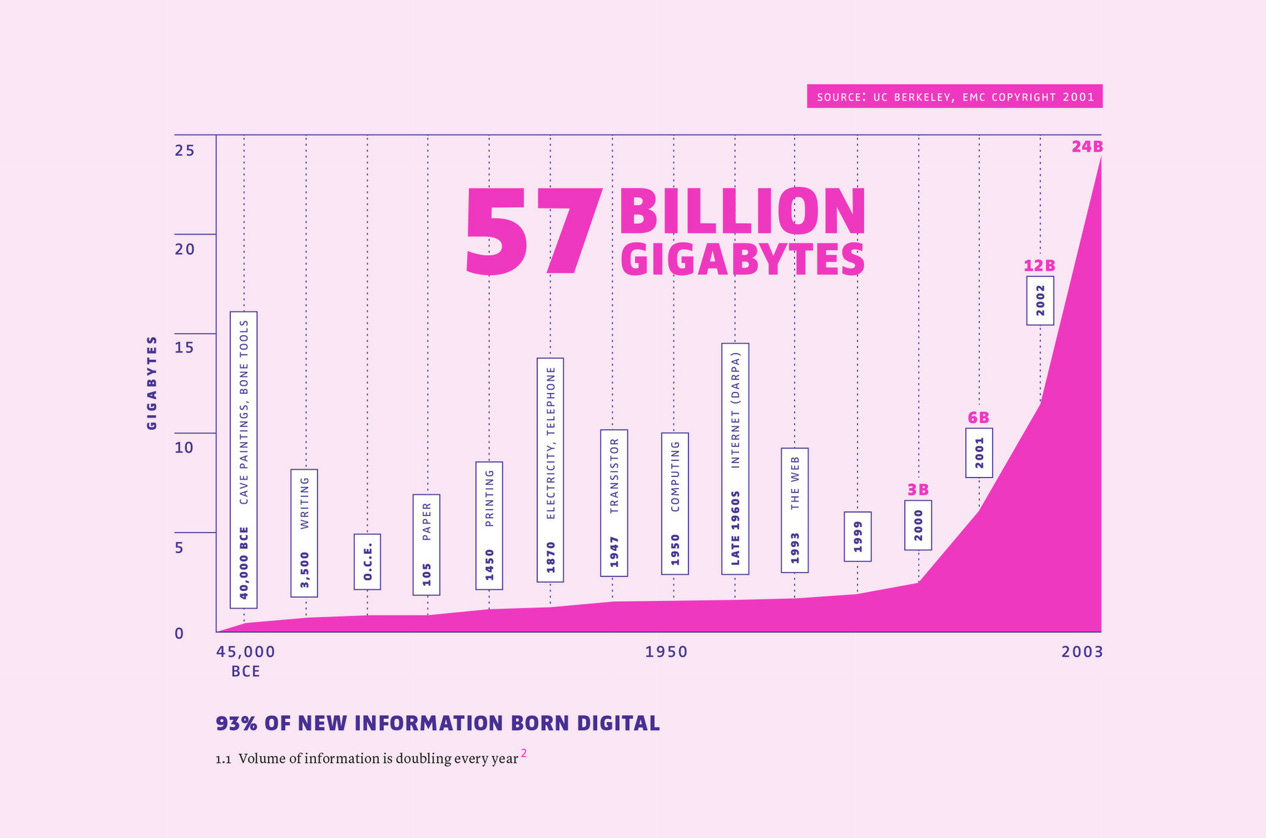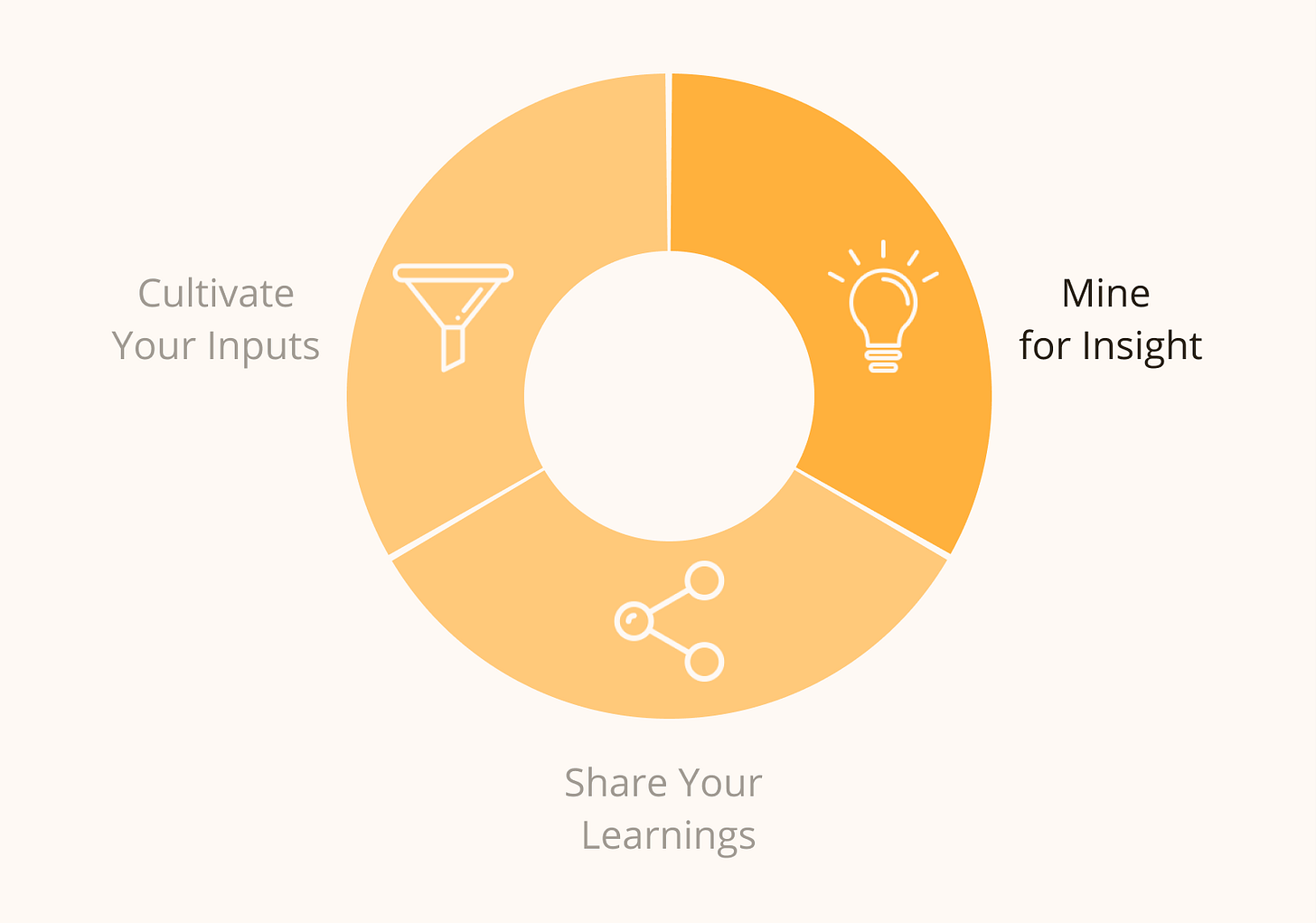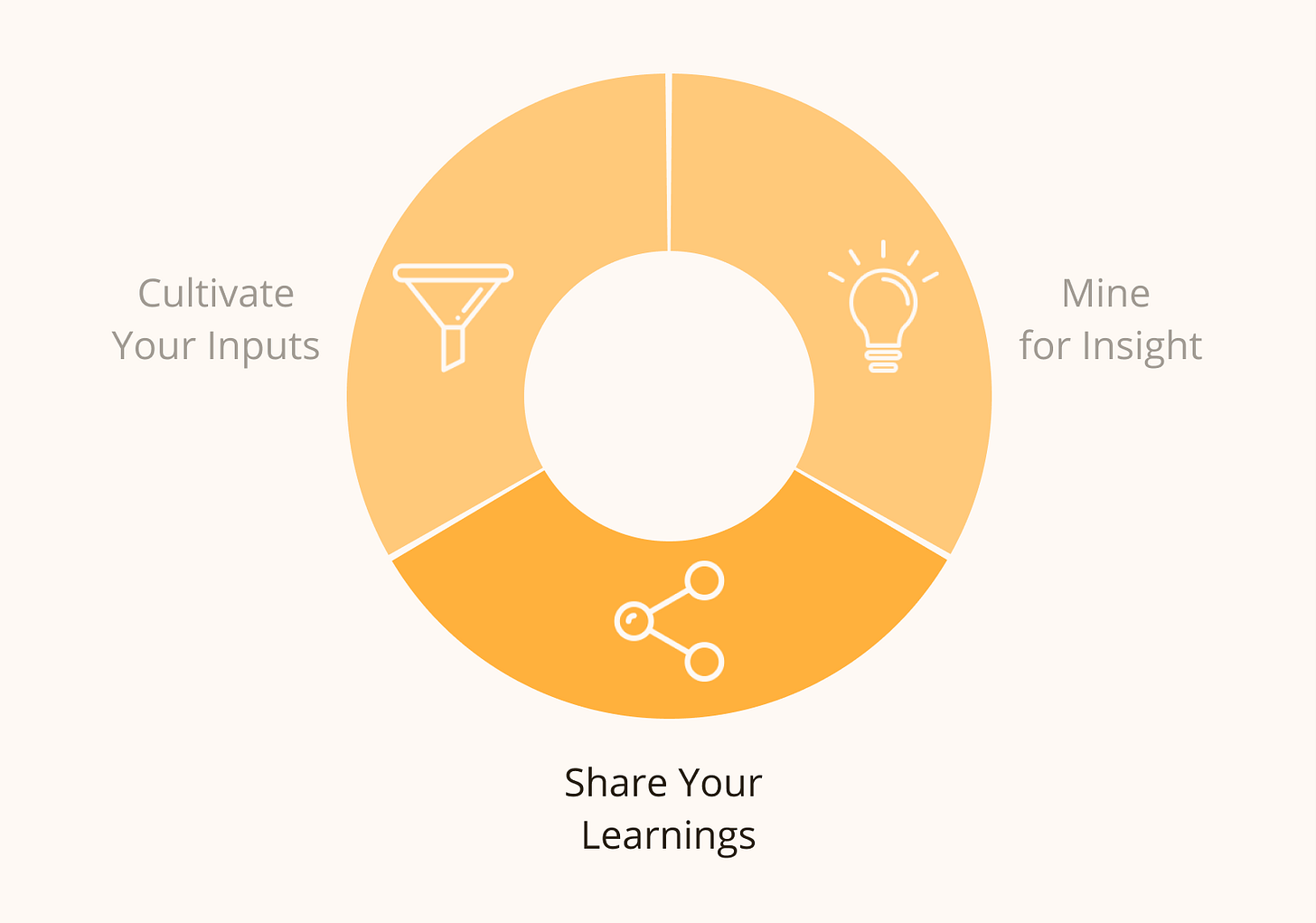The Learning Loop of Knowledge Work

This post was originally published in The Jungle Gym.
If you are a 21st Century knowledge worker, you are drowning in information.
I say this knowing nothing about you or the specifics of your job. Yet, I’m certain this applies to you, your teammates, your direct reports, and your manager. I know this because we are all drowning in information.
CIA analyst, Martin Guri described the vast amount of information that has engulfed us, with this dumbfounding statistic:
More information was generated in 2001 than in all the previous existence of our species on earth.
In fact, 2001 doubled the previous total. And 2002 doubled the amount present in 2001, adding around 23 “exabytes” of new information—roughly the equivalent of 140,000 Library of Congress collections.

This exponential growth of information has continued to today, where, in a single minute across the internet:
- 1,800 WordPress posts are created
- 500 hours of video is uploaded to Youtube
- 150,000 emails are composed
- 350,000 Tweets are Tweeted
- 148,800 Slack Messages are sent
Unfortunately, you have not experienced a comparable increase in your capacity for attention. The only difference between today and 45,000 BCE is the amount of information-based content that now competes for your mindshare.
You might think companies would be clamoring to solve this problem. After all, they are the ones paying for your attention. In reality, your employer is likely the largest producer of superfluous information in your life.
Why not just ignore all of this extra information? Because some of it is essential to your job. In fact, given the amount of content that’s out there, I’m certain that there is a book, a blog post, or an internal Google Doc with the exact information you need to solve your biggest problem at work. If you were able to access it and internalize its insights, both your company and your career would certainly stand to benefit.
The problem is your time and attention is already so consumed with Slack messages, slide decks, and internal emails that you don’t have the time or motivation to search for these gems. Ironically, this endless sea of information ends up distracting and preventing us from learning. In the words of the poet, Samuel Taylor Coleridge:
“Water, water, everywhere,
Nor any drop to drink.”
To capture the best of what the information ecosystem has to offer, you need a new approach to learning that allows you to identify and internalize the best of what the information ecosystem has to offer.
You need to leverage: The Learning Loop of Knowledge Work.
This approach can help you:
- Consistently absorb high-quality content, without being tempted by the information equivalent of junk food
- Capture your learnings and distill them into insights that can easily be resurfaced
- Retain your learnings by harnessing the motivational power of sharing with others
While this approach to learning can be hugely beneficial for individual workers, it can also have profound effects on the organizations where they work. By creating systems that incentivize, capture, and disseminate employee knowledge, organizations can serve as learning multipliers for their people.
For this to work, both companies and individuals need to operate under a new model. Employees need to approach information consumption and learning far more intentionally. Meanwhile, rather than overwhelming their people with information, companies must build systems that help employees access and share content that is useful and relevant.
How can individuals and organizations partner together to facilitate this Learning Loop? That’s what we’ll explore in the rest of this essay.
Cultivate High-Quality Information Inputs

In a world of information abundance, the biggest obstacle to capturing valuable knowledge is allowing your attention to get sapped away by low-quality or irrelevant information.
While great content may occasionally find you by accident, it is far more likely that the information ecosystem will feed you junk food. From your Twitter feed to the New York Times, the default unit of content you encounter is rarely designed to make you a better version of yourself.
To ensure you are encountering useful information, you need to get intentional about cultivating your own information streams. Here’s how to do it:
- Map out the essential roles and responsibilities in your personal and professional life (marketer, manager, father, etc.).
- Make a list of information sources (blogs, podcasts, newsletters, literary authors, communities, Youtube Channels, etc.) that you depend on to perform these functions.
- Unsubscribe/unfollow any that aren’t delivering consistent high-quality insight.
- Start seeking out new information sources to ensure you have coverage across each important domain.
How Your Company Can Help
A company’s strategy is only as good as its employees’ ideas. The better the information a company provides its people the higher quality decisions the company will make. To optimize for quality insight, companies should aspire to build their employees’ most useful information source. Here are some strategies companies can use to deliver quality information to their workforces:
- Hire smart and curious people who are willing to share their learnings with co-workers
- Pay for high-quality trainings and guest speakers that would be hard for employees to access otherwise
- Reduce friction to access gated content with easy-to-use learning stipends
- Incentivize knowledge sharing explicitly and implicitly
- Plug employees into communities that give them access to the type of information that is otherwise hard to gather publicly
- Build searchable libraries of the best battle-tested content. Ideally, this should be the first place an employee searches when facing a challenge.
Capture and Mine for Insights

Even with high-quality information streams, you will still need to sort through an overwhelming amount of information. Since you can’t control when a piece of content will reach you, you’ll need some way to collect the articles, podcasts, and diagrams you encounter so that you can mine them for insight later on.
Saving content for later gives you a second chance to consume when it is actually relevant to your work, so you can spend your limited attention appropriately.
Not everything you read will be actionable right away. That’s why you’ll want an easy way to capture highlights and notes from the content you consume so that you can revisit and reuse them later. Here are the tools in my content capture toolkit:
- Matter for saving and highlighting articles
- Kindle for highlighting books
- Airr for listening and highlighting transcripts from podcasts
- Raindrop for saving other types of links (websites, PDFs, etc)
- Eagle for saving images
- Otter.ai for voice notes
- Roam Research as a notebook
- Readwise to sync annotations from all other apps to Roam

How Your Company Can Help
Any company that is feeding employees a continuous stream of uncontextualized, unrefined content is probably doing more harm than good.
Rather than emailing a 60-page Whitepaper to your employees, get the company expert to read and summarize the findings for everyone else. The cost of the expert’s time will be more than counterbalanced by the time savings of the 30 people who would have spent an hour reading it. Even having a non-expert intern read and summarize every report or article is a worthwhile investment.
But don’t just let the annotated content get lost in a Slack thread. Instead, build a system that catalogs these insights so they can be discovered in the future.
Share your learnings and gather feedback

One of the best ways to internalize the knowledge you’ve gained is to share what you’ve learned with others. This can be as simple as Tweeting something you’ve learned or as complex as writing a book about it.
The magic of sharing is that the social pressure of making your ideas public will force you to refine your thinking and fill gaps in your knowledge. For example, when I write essays like this, I feel pressure to express my ideas clearly since I know they will be read by the subscribers of this newsletter.
It’s valuable to share ideas both in and outside your company. By sharing within your organization, you make your work visible and accessible to your co-workers. This allows your organization to fully benefit from and absorb your efforts.
Sharing outside your company is equally important since it allows you to gather feedback and start dialogues with the subject matter experts. By writing on an interesting topic, you can initiate discussions with knowledgeable people who can identify flaws in your thinking or resources for future learning. By allowing these recommendations to direct your learning, you initiate the next cycle of your learning loop.
How Your Company Can Help
Sharing cultures aren’t created by accident. They must be cultivated through intentional practices.
Most workers instinctively hoard knowledge. This comes from a desire to maintain a competitive edge as well as fear of judgment. On top of that, creating and sharing knowledge is time-intensive. For employees to see the value in sharing they must be incentivized by their organization.
Some good ways to motivate sharing include:
- Executive modeling – When leaders share their learnings it sends a signal to employees that they are safe to do the same
- Incorporating sharing into OKRs – By linking knowledge sharing with individual performance goals, employees know that they’ll be rewarded for their work
- Giving credit – People will be more incentivized to contribute to a company’s knowledge base if they get credit and earn status for their contributions
- Incentivizing contribution – Increase employee learning stipends based on the value of the contributions they make to the company’s knowledge base
Beyond internal sharing, companies also benefit when their employees share publicly, as it can help attract talent and, in some cases, even customers.
External sharing often feels much riskier to employees, who want to avoid looking as though they “aren’t doing their job.” To support this behavior, it’s up to leaders to implicitly and explicitly signal that external sharing is part of the job.
Learning to Swim
For a modern knowledge worker, there are no easy ways to simultaneously advance your career and significantly reduce your exposure to information.
Instead of spending your effort fighting the current of data, you’re better off learning to swim.
The habits of the learning loop can help you harness the power of our information-rich environment while ensuring you keep your head above water.
